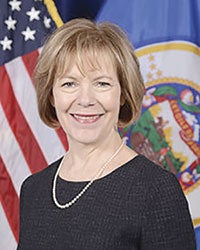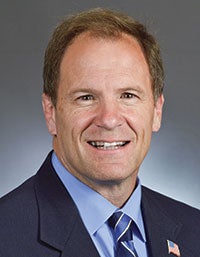Minn. farmers need property tax relief now
Published 9:05 am Wednesday, January 11, 2017
By Lt. Gov. Tina Smith and Rep. Paul Marquart
Minnesota farm communities are being hit by the perfect storm: low commodity prices, high land values, and aging schools. It is not fair to stick farmers with big property tax bills, or leave students with outdated classrooms. That is why we are proposing a tax credit to provide Minnesota farmers immediate relief from rising agricultural property taxes.

Lt. Gov. Tina Smith
Minnesota students need the best possible schools. However, state school funding has not kept up with the needs of our students over the last 15 years. The deficit has forced many rural school districts to pass local property tax levies to fund basic needs like building improvements and classroom technology. And school district levies have fallen disproportionately on farmers in communities without significant high-value land.
For family farmers, like David Kragnes, the cost of levies has been significant. David, his mother, and three sisters raise soybeans and corn on a 1,300 acre farm in Felton. In 2015, voters in the Moorhead School District passed a $78 million levy to pay for new school construction. Afterwards, David said, his property taxes increased roughly $4 an acre or an additional $2,600 a year for the acreage within the Moorhead district.
David is not the only Minnesota farmer struggling with high property taxes. Between 2010 and 2015, 108 districts passed levies to pay for building or equipment expenses. Overall, property taxes have increased 114 percent for Minnesota farmers over the last decade.
In the Dilworth-Glyndon-Felton School District, farmers would have paid 64 percent of the $31 million price tag on renovations to local school buildings. And in Barnesville, farmers would have paid for 74 percent of the $35 million levy. These levies would have increased property taxes by about $10 to 14 an acre. For 160 acres of farmland that translates to a $1,600 to $2,200 tax hike a year for 20 to 30 years.

Rep. Paul Marquart
The heavy burden makes it challenging for rural schools to secure the funding they need for basic needs. In 2016, the majority of levy referendums put to rural voters failed, while the majority posed to city voters passed. This puts students in school districts like Barnesville and Dilworth, where referendums failed, at a disadvantage to their metro peers.
Our tax credit plan would cover 40 percent of property taxes attributable to school district debt levies for Minnesota farmers. Approximately 74,000 farmers would be eligible for the credit, which would save them nearly $34 million in property taxes.
There is a lot of talk about partisan divisions in our state and country, but this tax credit is something we all should be able to agree on this year. Please contact your legislator. Urge them to support this Ag property tax credit and provide Minnesota farm families the relief they need.
Tina Smith is Minnesota’s 48th Lt. Governor. Paul Marquart represents Minnesota House District 4B.



